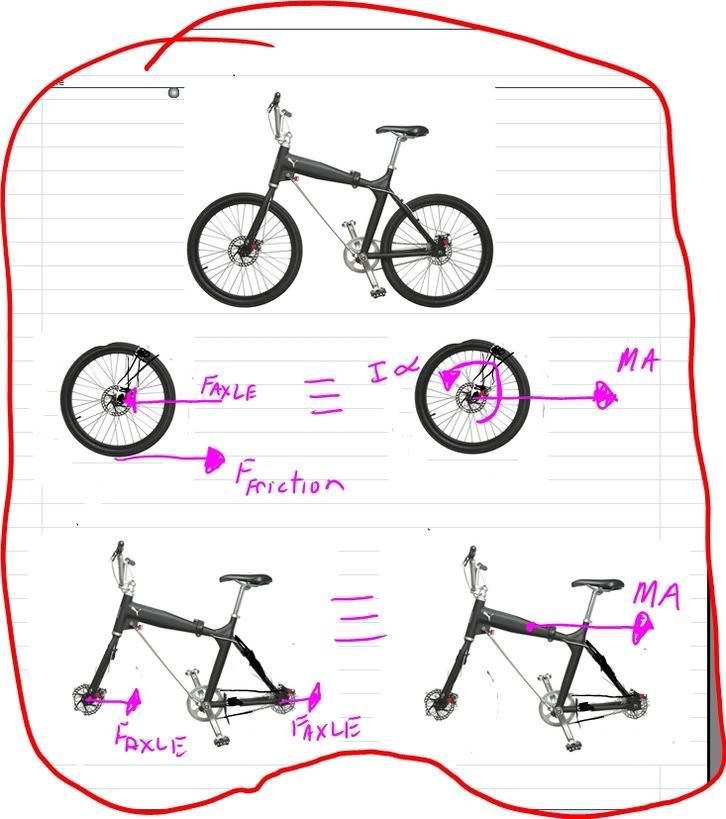Just to be sure I’m part of history, I’m gonna post some more…
Now lets stop all this magic stuff and do this right. ( This can actually be physically done with the technology and engineering we have today. Be a bit of a $$ waste but it could actually be done. )
We have a 10,000 foot treadmill that will take the weight of an airplane.
I am in control of the treadmill speed.
I am sitting facing the treadmill with 98% of the treadmill to my left as I face it.
I have a sight to look at the airplane through and can tell if it moves in relation to the hangers in the background or relative to me sitting off to the side.
First test.
Park the airplane on treadmill facing my left with engines off.
I move the treadmill to the right with my controller and since I moved it too quickly, the inertia of the airplane allowed the plane to roll forward a few feet as I brought the treadmill into motion. Due to friction, rolling resistance etc., the plane becomes stationary on the treadmill belt and moves off to the right until I slowly stop the belt.
*::: bring plane back to start position. ::: *
Second test.
The engine of the airplane is fired up and the plane begins to move to my left down the treadmill at 1.0 mph. I can see this in my sight so I bring the plane back to the start position by running the belt at 1.1 mph and slowing it to 1.0 mph to keep the plane in my sight. But I needed to actually go a bit faster with the treadmill because as soon as I started moving the plane to the right, the force of the thrust was increased by the plane stopping and moving to the right so it’s net thrust is higher than if it was in a steady 1.0 mph run down the runway.
But… this is a bigger load on the propeller ( lets use a propeller because it might be easier to see what is happening to the air being
pushed backwards. ) so the engine need a fraction more fuel to keep the same RPM.
This added power makes the plane move to the left again and I see this and speed up the treadmill more to keep the plane in position. This will sun reach an state of equilibrium when everything will balance out .
Now, the plane adds power to the propeller and I keep adding speed to the belt and keeping the plane stationary relative to me. Again we reach equilibrium at say 10 mph of belt speed but the plane is gaining much help from being stationary and so it’s actual ‘push’ to move is getting bigger and it is taking more and more belt speed to keep it there because the transferee of energy through the wheels and to the plane to counter act the force of the propeller is actually got the belt moving at 50 mph to the right to make enough force to hold against the plane’s countering force of pushing on the air.
Now I have a problem. Did we make the belt strong enough and fast enough to transfer enough force to the plane to counter act the engines at full power.
Depends on the speed we can move the belt and the strength of the landing gear and all it’s components.
For a Cessna 150 with small wheel, we might could build a treadmill fast enough to destroy the wheels and keep the plane on the ground.
An A1-E Skyraider or a C-130 super Herc, or F-18 in full after burner…?? Well that would be some belt because I have seen what those planes can do. Some brute force there. ( They don’t need wheels in some cases… Scary powerful they are. )
I don’t think we can build a belt that good for a big and powerful airplane.
Now we can amend this with all the magic you want and it still comes down to speed of light constraints if we have frictionless and infinite speed belts and mass less wheels.
Just remember how you’ve seen powerful airplanes skid with their brakes locked when at full power. That is a lot of force to restrain with just the normal transfer of force through a landing gear assembly.
This of course does not apply to those who want to play the " But if ( magic, magic, magic ) " game.
Which of course is silly.
That pastime is not a thought experiment, but a contest to see who can come up with the most outlandish set of impossible circumstances and IMO, has no mental bar bell qualities to it at all.

